Ryan Hall's Blog, page 250
May 31, 2016
Why Do Runners Wave?
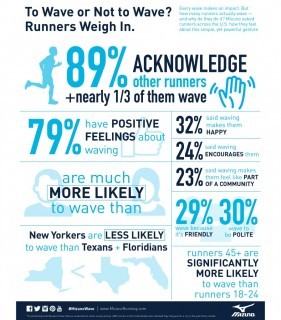
To help celebrate Global Running Day, Mizuno conducted a survey about America’s running habits. The results of the survey conducted by Research Now were obtained through online interviews among a national sample of 1,000 adults ages 18 and older who have gone for a run in the past three months.
Here are some of the significant findings of the survey:
Most runners generally acknowledge other runners in some way.
89 percent of all runners answered “Yes” or “Sometimes” when asked if they wave or acknowledge others while out for a run.
29 percent of runners said they acknowledge others by waving.
Waving is considered a friendly or polite thing to do.
30 percent of runners said they wave because they’re friendly.
29 percent of runners said they wave to be polite.
A wave brings positive energy into the running world.
79 percent of runners have positive feelings about waving.
32 percent of runners said waving makes them feel happy.
24 percent of runners said waving encourages them.
23 percent of runners said waving makes them feel like part of a community.
Certain age groups are more likely to wave than others.
Runners ages 45 and up are significantly more likely to wave than runners ages 18-24.
Younger people are more motivated by a wave from someone.
Runners ages 18-24 are significantly more likely to feel encouraged when someone waves at them than most other age groups.
Men and women differ in the ways they acknowledge other runners.
Men are significantly more likely to wave or nod as a form of acknowledgement. Results show that women prefer to smile.
There aren’t a lot of waves in a New York minute.
According to the survey, New York runners are significantly less likely to acknowledge others at all than runners in Florida and Texas.
The post Why Do Runners Wave? appeared first on Competitor.com.
May 30, 2016
Heart Attack Survivor Finishes 10K Seven Weeks After Starting It
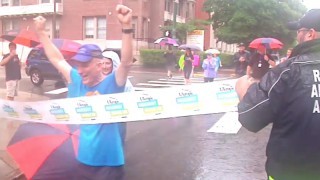
Seven weeks ago, 60-year-old Bill Hughes was participating in the Ukrop’s Monument Avenue 10K in Richmond, Virginia when he suffered a heart attack halfway through and went into cardiac arrest.
Thanks largely to immediate CPR administered by his daughter, and later by medical professionals, Hughes survived. But he wasn’t ready to give himself a DNF for the 10K.
“When I start to do something I want to finish it and I just felt bad that I hadn’t finished,” Hughes told WRIC-TV.
On Sunday, 50 days after the race, Hughes went back out and finished the course. He hopes his story can help raise awareness to the importance of learning CPR.
Here’s a video report from ABC News:
The post Heart Attack Survivor Finishes 10K Seven Weeks After Starting It appeared first on Competitor.com.
May 29, 2016
Thousands Enjoy Ideal Conditions for Rock ‘n’ Roll Liverpool
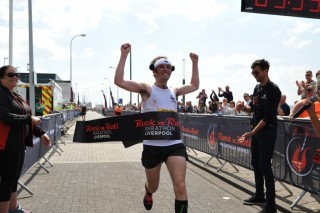
LIVERPOOL — With ideal running temperatures and sunny skies, the 3rd annual Rock ‘n’ Roll Liverpool Marathon & 1/2 Marathon crowned two defending champions in the men’s and women’s marathons. Robert Pope finished first with a time of 2:27:15, and female winner Joanne Nelson won with a time of 3:00:59.
“It was amazing, I’m very surprised that it turned out as well as it did,” said Pope, who ran with a panda on his headband to raise awareness for the World Wildlife Fund.
“I loved it, absolutely fantastic. The weather was great and the crowds were great all the way around,” added Nelson. “This race has a bit of everything; it’s not an easy course with some undulations and it’s beautiful through the parks. The crowds we’re really, really good today and it was super well organized. It was brilliant.”
RELATED: Photos: 2016 Rock ‘n’ Roll Liverpool
In the half marathon, Ethiopian Degene Geziumo was first across the finish line along the River Mersey, winning the 13.1-mile race in 1, hour, 9 minutes and 44 seconds.
“It was very good today with no rain, no wind and not hot. I’m very happy to win,” said Gezimu, who lives in Liverpool and runs with Liverpool Harriers & Athletic club. “I love living in Liverpool and I’m very thankful to the Harriers for supporting me. I’m very proud to win for them.”
Local runner Helen Sahgal won the women’s half marathon in 1:24.
“The race was fantastic. Great support along the course and brilliant atmosphere,” said Sahgal, who was competing in just her third half marathon. “With this event you get fast club runners, you get fun runners and charity runners all coming together and just having a great time. That’s what it’s all about.”
The 3rd Rock ‘n’ Roll Liverpool Marathon & 1/2 Marathon weekend welcomed more than 16,000 entrants from 54 countries. Both races started and finished along Liverpool’s waterfront, featuring scenic views of the stunning docks, rich architecture, spectacular museums and historic commercial districts with live bands performing along each mile of the race course.
The event featured a post race concert headlined by English rock band Cast. The weekend’s schedule of events also included the Rock ‘n’ Roll 5K on Saturday, which was voted as the UK’s Best Fun Run 5K. The fourth annual Rock ‘n’ Roll Liverpool Marathon weekend is set for May 27-28, 2017.
The post Thousands Enjoy Ideal Conditions for Rock ‘n’ Roll Liverpool appeared first on Competitor.com.
Photos: 2016 Rock ‘n’ Roll Liverpool
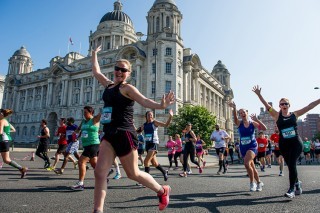
The Rock ‘n’ Roll Liverpool Marathon and 1/2 took place under sunny skies in Liverpool, England on Sunday. Thousands of runners took to the streets to celebrate a weekend of running in a city rich in musical roots.
RELATED: Thousands Enjoy Ideal Conditions at Rock ‘n’ Roll Liverpool
Here are photos from the race, taken by Ryan Bethke:
Photo Gallery
1 of {count}
Back to Start
View Larger Image

View Larger Image

View Larger Image

View Larger Image

View Larger Image

View Larger Image

View Larger Image

View Larger Image

View Larger Image

View Larger Image

View Larger Image

View Larger Image

View Larger Image

View Larger Image

View Larger Image

View Larger Image

View Larger Image

View Larger Image

View Larger Image

View Larger Image

View Larger Image

Related Galleries

Photos: 2015 Rock ‘n’ Roll Liverpool

Photo Gallery: BT Rock ‘n’ Roll Liverpool Marathon & 1/2 Marathon

Photos: BT Rock ‘n’ Roll Liverpool Marathon & 1/2 Marathon

More Galleries
The post Photos: 2016 Rock ‘n’ Roll Liverpool appeared first on Competitor.com.
Photos: A Sun-Splashed Day at #RnRLiverpool
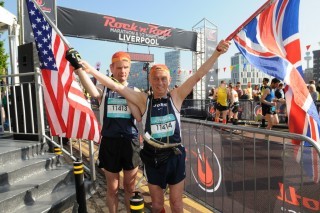
Liverpool rolled out the welcome mat Sunday for the 3rd annual Rock ‘n’ Roll Liverpool Marathon & ½ Marathon with 16,000 runners, 55 bands and thousands of spectators happily sharing a sun-splashed summery morning.
Photo Gallery
1 of {count}
Back to Start
View Larger Image

D3A_5323
View Larger Image

LIV 16 (1 of 22)
View Larger Image

LIV 16 (2 of 22)
View Larger Image

LIV 16 (3 of 22)
View Larger Image

LIV 16 (4 of 22)
View Larger Image

LIV 16 (5 of 22)
View Larger Image

LIV 16 (6 of 22)
View Larger Image

LIV 16 (7 of 22)
View Larger Image

LIV 16 (8 of 22)
View Larger Image

LIV 16 (9 of 22)
View Larger Image

LIV 16 (10 of 22)
View Larger Image

LIV 16 (11 of 22)
View Larger Image

LIV 16 (12 of 22)
View Larger Image

LIV 16 (13 of 22)
View Larger Image

D7C_3941
View Larger Image

D7C_3787
View Larger Image

D7C_3769
View Larger Image

D7C_3713
View Larger Image

D7C_3684
View Larger Image

D7C_3680
View Larger Image

D7C_3431
View Larger Image

D7C_2669
View Larger Image

D7C_2506
View Larger Image

D5B_6099
View Larger Image

D3A_6008
View Larger Image

D3A_6004
View Larger Image

D3A_5659
View Larger Image

D3A_5348
View Larger Image

D3A_5262

More Galleries
The post Photos: A Sun-Splashed Day at #RnRLiverpool appeared first on Competitor.com.
May 28, 2016
Beautiful day for the #RnRLiverpool 5k
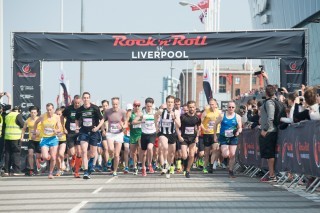
Photo Gallery
1 of {count}
Back to Start
View Larger Image

View Larger Image

View Larger Image

View Larger Image

View Larger Image

View Larger Image

View Larger Image

View Larger Image

View Larger Image

View Larger Image

View Larger Image

View Larger Image

View Larger Image

View Larger Image

View Larger Image

View Larger Image

View Larger Image

Related Galleries

Photos: 2016 Healthy Kidney 10K in New York City

Photos: 2016 Medtronic TC 1 Mile

Photos: 2016 Tinkerbell Half Marathon
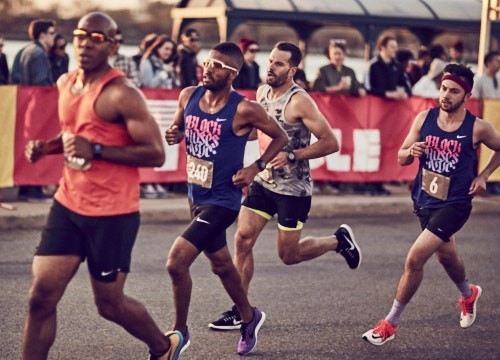
Photos: The One-of-a-Kind Red Hook Crit 5K in Brooklyn

More Galleries
Marathon weekend is underway in Liverpool as the award winning Rock ‘n’ Roll 5K took place on Saturday morning at Albert Dock under bright and sunny blue skies. The race was given the Running Award for the “Best 5k Fun Run” in the UK. 28-year-old Ross Floyd won the men’s race in 15 minutes and 44 seconds. Representing the Liverpool Harriers Athletic Club Rachael Burns, a 36-year-old mother of two, won the women’s race with a time of 16:29.
Marathon weekend continues on Sunday as runners from 54 different countries take over the streets of Liverpool. Live bands will be playing along the course to entertain and encourage runners as they make their way to the Finish Line Festival in front of Echo Arena with a headliner concert by Cast.
The post Beautiful day for the #RnRLiverpool 5k appeared first on Competitor.com.
May 27, 2016
Health Scare Behind Her, Rachael Burns Juggles Busy Life and Fast Running

The mother of two is among the fast runners at Rock ‘n’ Roll Liverpool this weekend.
Tony Clarke coaches the Liverpool Harriers Athletic Club and occasionally hears runners moan about the struggles of trying to squeeze in workouts amidst their hectic lives.
Short on sympathy, Clarke often responds thusly: “Look at Rachael Burns.”
Burns is a 36-year-old mother of two—an 8-year-old son, Oscar, and 6-year-old daughter, Polly. She works part-time as a pre-school assistant. In between schlepping the kids to and from school, helping with homework, cooking meals and trying to remain sane while supervising 2- to 4-year-old preschoolers, Burns trains.
Recently selected to represent England Athletics, Burns will toe the line Saturday morning at the Rock ‘n’ Roll Liverpool 5K, where her personal best is 16 minutes, 34 seconds. The 3.1-miler serves as a buildup for Sunday’s main event, when thousands of runners and walkers will tour the Beatles’ birthplace in the Rock ‘n’ Roll Liverpool Marathon & 1/2.
Of the thousands of hard-core runners who’ll be hoofing it about the streets, chasing the clock, you’ll be hard pressed to find a more compelling story than Burns’.
The Cliffs’ Notes version: Burns ran a little cross country in high school, then served in the Royal Navy for seven years, exited the Navy to start a family, began running some road races, dabbled in the marathon, switched to shorter distances barely three years ago and in 2016 has been popping personal bests like some do breath mints.
There also was a little incident in late 2012 when Burns collapsed near her home while on a workout, went to the doctor the next day and discovered her brain had hemorrhaged.
Of Burns’ tale, Clarke says, “Amazing, completely amazing. Fantastic.”
Burns first joined a running club in 2011, knocking off two marathons that year, clocking a 3:44 and 3:37. Noticing runners from Clarke’s club tended to regularly have medals draped around their necks, she switched clubs.
Clarke trained Burns for the 2012 New York City Marathon.
“She was in sub-3 (hour) shape,” said Clarke. “No doubt about it.”
Burns flew to New York, picked up her bib at the expo, was ready to uncork a PR, only to have the race canceled less than 48 hours before the start because of Hurricane Sandy.
Upon Burns’ return to England, Clarke unveiled a new vision.
“How about we put the marathon to bed a little bit and see how you like shorter distances?” he proposed.
The transition to the shorter stuff, though, had to be put on hold. Days after returning from New York, about 200 yards from home, Burns dropped to the ground, a piercing pain racking her head.
“I thought I’d been shot in the head,” she recalled. “I put my hands up there but there was no blood. It was horrific. My whole head felt like it popped. It was instant. I was in agony.”
After walking home, she picked up the kids from school, went to a hospital the next day and discovered a blood vessel had burst in her brain. She was hospitalized nine days and couldn’t exercise for three months.
Fast forward to 2016.
Owed in large part to consistent training and racing the past three years, Burns has set PRs in the 1,500, mile, 3,000, 5K on the road and 10K on the road. Some of the jumps have been phenomenal.
She dropped her best in the 5K from 17:11 to 16:34 and in the 10K from 35:52 to 34:46.
“Those are big chunks,” said Clarke.
England Athletics, a grass roots organization that develops athletes, noticed. Earlier this month Burns received a voice mail from an England Athletics official, saying she had been selected to represent the country.
“I thought it was a prank,” said Burns.
It wasn’t. Wearing a white singlet with ENGLAND printed across the chest, Burns represented her country for the first time on May 22 at the Loughborough International, a meet featuring some of Great Britain’s best amateur athletes.
Burns finished second in the 3,000 meters in 9 minutes, 27.08 seconds, clocking another personal best, this one by more than 16 seconds.
Burns and Clarke both feel that the frightening health scare she suffered more than 3½ years ago contributed to her success as a runner.
“It made running less painful,” said Burns. “It was like my running turned a corner after that. I think I was more determine to succeed, I suppose.”
During Burns’ hospitalization, Clarke said a doctor told him the staff had no idea how she would recover.
“It was touch and go,” Clarke said.
He remembers something else, something he told Burns while she was confined to a hospital bed.
“You’ll get out of this bed one day,” he said. “We’ll be running again.”
The 2016 Rock ‘n’ Roll Liverpool Marathon & ½ Marathon returns this weekend with the marathon and half marathon on Sunday, a One Mile Fun Run in the afternoon and a 5K on Saturday. More than 16,000 runners are set to take over the streets of Liverpool over the weekend from 54 different countries. Live bands will be playing along the course to entertain and encourage runners as they make their way to the Finish Line Festival in front of Echo Arena with a headliner concert by Cast.
The marathon and half marathon will start and finish by the Albert Dock, one of the most visited attractions in the UK and a World Heritage Site. The races feature scenic views of Liverpool’s stunning docks, rich architecture, spectacular museums and historic commercial districts.
“We are so excited to put on another great event in one of the UK’s most iconic cities,” said Rob Griffiths, race director. “We’ve seen a lot of growth since our inaugural event in 2014: in just three years, the event has more than doubled in participation. Our international representation has increased, and now more than 53 percent of the runners are female. We are also receiving such amazing support from the local community.”
The post Health Scare Behind Her, Rachael Burns Juggles Busy Life and Fast Running appeared first on Competitor.com.
Can an Athlete be Fit But Unhealthy?
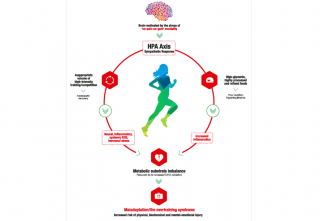
Here's a diagram of what is know as the "fit but unhealthy training and eating paradigm." Graphic: Simon Greenland and Ivan Rivera
A new paper published on May 26 in the scientific journal Sports Medicine takes a look at the topic of how athletes can be both fit and unhealthy. The paper, published by sports scientists Phil Maffetone and Paul Laursen, starts by noting that fitness and health are two different things: fitness describes the ability to perform a given exercise task, and health explains a person’s state of well-being, where physiological systems work in harmony. It also suggests that many athletes are fit but unhealthy, most often because of excess high training intensity or training volume and/or excess consumption of processed/refined dietary carbohydrates.
Maffetone and Laursen look at diet, athletic origins, training trauma and inflammamation before offering possible solutions and conclusions. Here is a look at the abstract of the paper (published with permission) and their conclusions, as well as a link to the published paper.
Abstract
While the words “fit” and “healthy” are often used synonymously in everyday language, the terms have entirely separate meanings. Fitness describes the ability to perform a given exercise task, and health explains a person’s state of well-being, where physiological systems work in harmony. Although we typically view athletes as fit and healthy, they often are not. The global term we place on unhealthy athletes is the overtraining syndrome. In this current opinion, we propose that two primary drivers may contribute to the development of the overtraining syndrome, namely high training intensity and the modern-day highly processed, high glycemic diet. Both factors elicit a sympathetic response through the hypothalamic-pituitary-adrenal axis, in turn driving systemic reactive oxygen species production, inflammation, and a metabolic substrate imbalance towards carbohydrate and away from fat oxidation, manifesting in an array of symptoms often labeled as the overtraining syndrome. Ultimately, these symptoms reveal an unhealthy athlete. We argue that practitioners, scientists, and athletes may work towards health and alleviate overtraining syndrome by lowering training intensity and removing processed and/or high glycemic foods from the diet, which together enhance fat oxidation rates. Athletes should be fit and healthy.
Conclusions
Physical, biochemical, and mental-emotional injuries are not expected/normal outcomes from endurance sport participation, yet the incidence of these in athletes is alarmingly high. Practitioners, coaches, and athletes should be cognizant of impending health abnormalities during training and consider periods of reduced training intensity and recovery, while emphasizing a natural, unprocessed diet to improve health and cultivate sustainable fitness. For optimal performance, athletes must be fit and healthy.
READ MORE: Sports Medicine
The post Can an Athlete be Fit But Unhealthy? appeared first on Competitor.com.
Medals of Honor: Earn Finisher’s Medals to Honor the Military
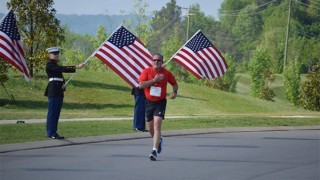
A runner passes flags held by Marine JROTC members on his way to the finish line of Medals of Honor's inaugural Honor The Fallen 5K & Memorial Mile. Photo: Hannah Sleeper/courtesy of Medals of Honor
It’s not unusual to see service men and women running a race in their boots and fatigues. But Amy Cotta is different.
She runs in combat boots not because she’s in the military, but in support of her son who joined the Marines in 2011. It was her way of feeling connected to him as he went through basic training. The 47-year-old certified trainer, model, author of Six Weeks to Skinny Jeans and former competitive body builder was moved by the conversations that started as a result of her unconventional footwear, so she stuck with it. Cotta has since run more than 30 races in combat boots, everything from 5Ks to Ironman triathlons. When she isn’t running races, she’s volunteering at them with the organization she founded, Medals of Honor.
Medals of Honor began in 2014 as a grassroots effort when Cotta ran Ironman Chattanooga—in her combat boots, of course—with the pictures of 21 fallen servicemen on her pack. Cotta’s dream was to give her race medal to the mother of one of the deceased men. But she crossed the line after the official cutoff time, meaning no medal. Cotta turned to social media to share her plight, receiving donated medals for all 21 families within hours.
Now Medals of Honor is an official 501(c)(3) with a national impact and athletes at races across the country. Interested athletes can go to the website and register (it’s free) to run in honor of fallen service men and women whose families have added them to the Medals of Honor database. In addition to agreeing to donate their finisher’s medal, athletes running on behalf of Medals of Honor get special bibs (either as a downloadable template, by mail, or at select races) to share the name, rank, branch and date of death of their fallen hero.
“They wear the bib as they race to ‘carry’ their fallen hero with them,” Cotta says. “We’ve noticed the athletes get deeply, deeply connected with that person when they are running. It brings it home that this was really someone’s husband, wife, uncle, aunt, mother, father, son or daughter. It makes the fallen more than a number.”
Cotta says Medals of Honor is a way to close the gap between surviving family members, active duty military, veterans and civilians.
“Medals of Honor is the bridge, but they’re walking across and meeting each other on their own,” says Cotta, a mother of six and grandmother of three of the bonds formed through the program. “Some people also say this is the first time their racing has ever had meaning because they are doing it for someone else.”
In addition to assisting those who want to race for others, Medals of Honor has a new program called Enduring Heroes, where families of the fallen, active duty and veterans can apply for sponsored entries to endurance events of their choice.
“Races are a way for people to do something physical to heal and honor a loved one, fallen teammate or even someone they’ve never met,” Cotta says. “If you have the will and we have the means, we’ll make race entries happen.”
So far this year, 10 athletes have been sponsored through Enduring Heroes. Cotta’s goal for 2016 is to give away 30 sponsorships.
Medals of Honor is hosting their second event on Nov. 12, the Boots for Troops 5K, in Franklin, Tenn. For those who can’t make it to Franklin, there is a virtual participation option. As a unique twist, participants are encouraged to lace up a pair of boots, to experience a small sense of what it feels like for soldiers. Their first event, the Honor the Fallen 5K & Memorial Mile took place this past April in College Grove, Tenn.
“We’re growing fast, and I don’t see any limit to it,” says the military mom who knows her son is proud of what she’s doing, even though he thinks she’s a little crazy. “He’s a tight-lipped Marine, so he may not say much. But, where words fail, hugs don’t.”
RELATED: Mike Ehredt Continues Mission to Run for Fallen American Soldiers
The post Medals of Honor: Earn Finisher’s Medals to Honor the Military appeared first on Competitor.com.
Last Lap with Knox Robinson: The Explorer

Photo: Courtesy of Nike
Few runners seem to explore what running looks and feels like the way Knox Robinson does. The former college runner at Wake Forest spent his twenties as editor-in-chief of a music magazine, then came back to running in adulthood in a big way. The 41-year-old from Beacon, N.Y., is now a coach of Nike+ Run Club in New York City, captain and co-founder of Black Roses NYC run crew and a top 100 finisher in the New York City Marathon. Away from the Big Apple he runs trails in Appalachia, curates exploratory runs in Mexico and can be found “wherever running is weird and interesting,” he says.
What attracted you to the run crew scene in New York City?
There was a little shift in New York that happened. A lot of guys in my peer group who were into partying, drugs, alcohol and tattoos kind of swapped one addiction for another and got into running. I was already running, and it was cool just to hang around folks who were super passionate about it. You didn’t have to talk about all that tedious and incidental stuff that surrounded running culture in the ’90s. It was awesome to see people just throw themselves at it, freeing themselves from all those previous trappings and just going at it for the feeling of it all.
How has this second running boom changed the sport?
Until recently, I think it was easy to take a selfie and say ‘I just ran a marathon’ and people would think you must be fast, or you must be amazing. Yeah that’s incredible, but there’s a sustainable and soulful approach that we can investigate and explore, and that’s really the beginning of understanding the gifts of running. It’s not just about ‘I got this finishers medal, I ran this marathon,’ it’s all about running as an inner exploration, and the engineering of the self.
What tends to make non-runners take up running?
Smokers are the easiest because they just want to quit smoking. Otherwise, I think sometimes an individual just says today’s the day. And they get up and run 1 mile. I want to think there’s something in the brain that says, ‘Hey, let’s get up and do this.’
What’s the most satisfying thing about coaching runners?
Last weekend, Black Roses NYC had a dude qualify for Boston, a woman qualify for Boston, and another woman break 4 hours for the first time. That was really satisfying as a coach. But it was also really satisfying that the entire group rallied around those people and cheered them on their journey. It’s really, really edifying as a coach to create a space for someone to explore their own dream of running. But if other people jump in and lift them up, that’s when you don’t really need acknowledgement as a coach. Looking at running as a kind of community building, and healing the human heart and addressing our public health concerns, that’s really what gets me up and going.
What directions will running head in the future?
I think people are gonna want to get weirder. The pattern I’m seeing is, you get into running, you get super passionate, the craziest goal you can think of is running a marathon, you throw yourself at it, you get hurt, you come back, run your marathon and afterward you’re like OK, so what? That’s when it gets interesting, and I think that’s why people are getting into trail running, or unsanctioned races, or weird races. In our culture we want to have goals and achievements and rewards, but running transcends and supersedes all of that. Because it’s ancestral, it’s part of our DNA, it’s part of our makeup. So once you really get into running, you’re constantly thinking, what’s next? That’s the promise and the torture of it.
The post Last Lap with Knox Robinson: The Explorer appeared first on Competitor.com.
Ryan Hall's Blog
- Ryan Hall's profile
- 21 followers



